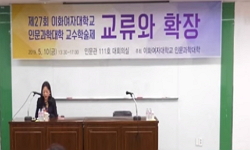Korea and Russia have experienced tremendous change not only in their trade volume but in their trade structure since the normalization of their diplomatic relations in 1990. Comparing the two countries in structural change of export commodities cl...
http://chineseinput.net/에서 pinyin(병음)방식으로 중국어를 변환할 수 있습니다.
변환된 중국어를 복사하여 사용하시면 됩니다.
- 中文 을 입력하시려면 zhongwen을 입력하시고 space를누르시면됩니다.
- 北京 을 입력하시려면 beijing을 입력하시고 space를 누르시면 됩니다.
https://www.riss.kr/link?id=A77054069
- 저자
- 발행기관
- 학술지명
- 권호사항
-
발행연도
2000
-
작성언어
Korean
- 주제어
-
등재정보
KCI등재
-
자료형태
학술저널
- 발행기관 URL
-
수록면
327-352(26쪽)
- 제공처
- 소장기관
-
0
상세조회 -
0
다운로드
부가정보
다국어 초록 (Multilingual Abstract)
Comparing the two countries in structural change of export commodities classified by SITC 1 digit. Korea has been comparatively more stable than Russia. While more than half of Russian exports to Korea have continued to be concentrated in SITC 2 and 6, commodity group of Korean exports to Russia have spread over SITC 5. 6, 7 and 8 during the period under consideration.
The two countries did not show a high and rising level of strong intra-industrial trade means. That means that the trade structure. i.e .. the structure of the division of labor. between the two countries has been stayed to a horizontal rather than vertical one. In other words. the foundation of sound economic cooperation between two countries has not been reinforced.
Both countries have a comparative advantage in most of their top 10 and their top 30 exporting commodities which are classified by SITC 3 digit. However. it is notable that Korea has fewer commodity groups who has a comparative advantage not only in their top 10 but in the top 30 exporting commodities. A policy implication of this result is that. it is necessary for Korea to strengthen the productivity and competitiveness of its main exporting commodities to Russia and develop new higher value-added exporting items.
Korea and Russia have experienced tremendous change not only in their trade volume but in their trade structure since the normalization of their diplomatic relations in 1990.
Comparing the two countries in structural change of export commodities classified by SITC 1 digit. Korea has been comparatively more stable than Russia. While more than half of Russian exports to Korea have continued to be concentrated in SITC 2 and 6, commodity group of Korean exports to Russia have spread over SITC 5. 6, 7 and 8 during the period under consideration.
The two countries did not show a high and rising level of strong intra-industrial trade means. That means that the trade structure. i.e .. the structure of the division of labor. between the two countries has been stayed to a horizontal rather than vertical one. In other words. the foundation of sound economic cooperation between two countries has not been reinforced.
Both countries have a comparative advantage in most of their top 10 and their top 30 exporting commodities which are classified by SITC 3 digit. However. it is notable that Korea has fewer commodity groups who has a comparative advantage not only in their top 10 but in the top 30 exporting commodities. A policy implication of this result is that. it is necessary for Korea to strengthen the productivity and competitiveness of its main exporting commodities to Russia and develop new higher value-added exporting items.
목차 (Table of Contents)
- Ⅰ. 연구의 목적, 의의 및 방법
- Ⅱ. 한국과 러시아간 무역의 추이와 위상
- Ⅲ. 한국과 러시아간 무역구조
- Ⅳ. 한국과 러시아의 경쟁력 분석
- Ⅴ. 한국과 러시아간 무역의 과제
- Ⅰ. 연구의 목적, 의의 및 방법
- Ⅱ. 한국과 러시아간 무역의 추이와 위상
- Ⅲ. 한국과 러시아간 무역구조
- Ⅳ. 한국과 러시아의 경쟁력 분석
- Ⅴ. 한국과 러시아간 무역의 과제
- 참고문헌
- Abstract
동일학술지(권/호) 다른 논문
-
- 한국슬라브유라시아학회
- 홍성원(Хонг Сонг Вон)
- 2000
- KCI등재
-
- 한국슬라브유라시아학회
- 함영준(Хам Ён Джун)
- 2000
- KCI등재
-
- 한국슬라브유라시아학회
- 석영중(Seog Youngjoong)
- 2000
- KCI등재
-
뿌쉬낀의 《스페이드 여왕》의 제사(ЭПИГРАФ) 연구
- 한국슬라브유라시아학회
- 이영범(Ли Ён Бум)
- 2000
- KCI등재





 DBpia
DBpia






